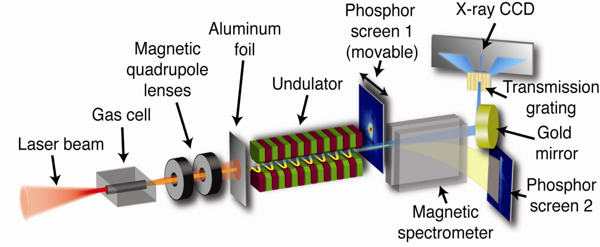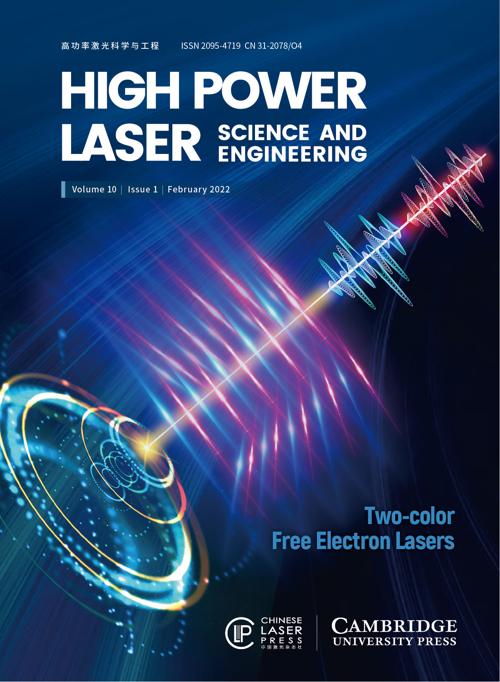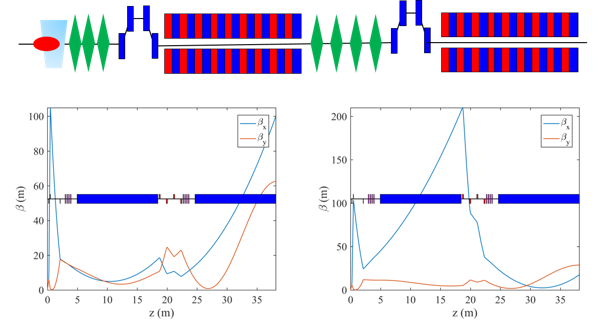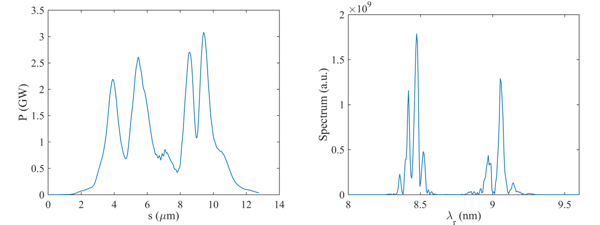Laser-plasma accelerators (LPA) have great potential to drive a new generation of free-electron lasers (FELs), as shown in fig. 1, which enables acceleration by multi-GeV energies in centimeter-scale plasmas and could drastically reduce the size, costs and complexity of the future FEL facilities. The first demonstration of plasma-driven FEL gain was reported in China, representing a major milestone for the field in 2020. Two-color x-ray FELs have great application value in ultra-fast field such as pump-probe and nonlinear wave mixing, which are usually realized on the conventional RF-based accelerator. Limited by the performance of the plasma-driven beam, x-ray FEL is difficult for realization. As for the plasma-driven two-color FEL, these is a research blank both in theory and experiment.

Fig.1 Layout of the LPA-FEL facility
Recently, a research scheme of a plasma-driven two-color FEL generation based on matching manipulation technology has been proposed by the FEL group in Shanghai Advanced Research Institute, Chinese Academy of Sciences, which enables to generate a high brightness two-color FEL with ultra-short pulse duration. The related research results are published on High Power Laser Science and Engineering, Vol. 10, Issue, 1 (Tao Liu, Kaiqing Zhang, Zheng Qi, et al. Matching-based two-color X-ray free-electron laser generation utilizing laser-plasma accelerated electron beam[J]. High Power Laser Science and Engineering, 2022, 10(1): 010000e1), and is selected as cover paper.

As shown in fig. 2, the basic scheme consists of quadrupoles for focusing and matching, chicane for inducing energy-to-longitudinal correlation, undulators for the first color lasing, quadrupoles for the matching adjustment, chicane for time delaying, and undulators for the second color lasing.

Fig. 2 Scheme design of the two-color x-ray FEL generation based on laser-plasma accelerated electron beam.
The proposal makes full use of the large initial divergence and energy spread of the LPA beam that generates time-dependent mismatch with the help of quadrupoles and chicane, and meanwhile the large slice energy spread is also reduced. Two-color x-ray FEL will be generated by adjusting the time-dependent mismatch. For the simulation, the plasma-driven beam with energy of 1.3 GeV and energy spread of 1% is adopted. As a result shown in fig. 3, two-color x-rays with 8.5&9.0 nm wavelength and GW-level peak power are achievable. Both of the wavelength and time separation of the two colors are adjustable continuously, which is very useful for the pump-probe experiment.

Fig. 3 Spectrum of the two-color x-ray FEL in time domain and frequency domain.
The research take attention to the cutting edge in the particle accelerator, and firstly propose the two-color x-ray FEL scheme based on an LPA beam, which is of great significance for the development of a new generation of advanced light sources and the majority of scientific experiments. Breaking out of the limitation of the LPA beam quality, the scheme overcomes the energy spread disadvantage and switches it to the advantage of the two-color generation. It is very simple and novel, which has experimental feasibility and popularization.
Professor Haixiao Deng, a member of the FEL group, said "The result of this work is applicable for FEL facilities based on plasma driven accelerators, and expected to produce two-color x-ray FEL. If the experimental verification can be carried out, it will promote the development of the compact accelerators. The generation of two-color x-ray will also provide very important application value for the ultrafast research."
Next step, the group will continue this work in depth. Based on the plasma-driven accelerators, they will carry out the start-to-end simulation, analyse the impact of the chromaticity, CSR effect, and other problems on the FEL radiation, and optimize the scheme design further. And a principle verification experiment will be considered to be on the agenda in the future.


